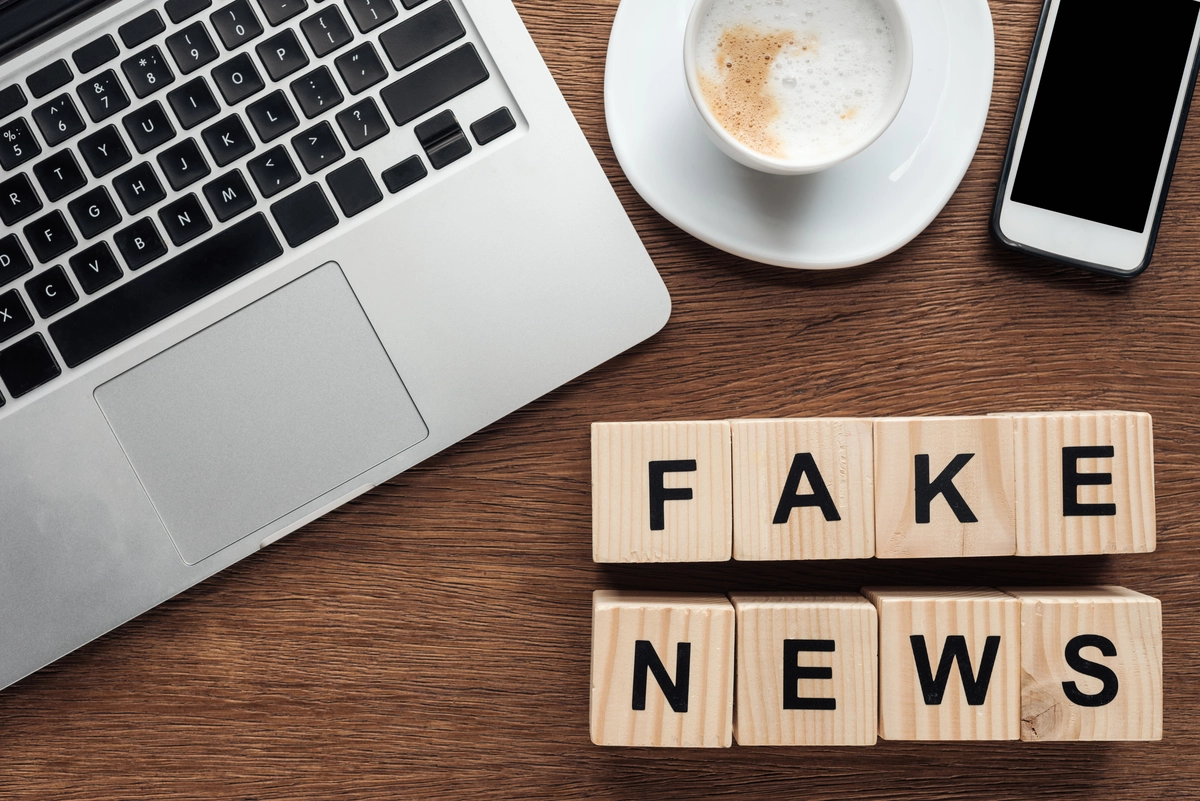What Is the Role of AI in Combating Fake News?
One of AI’s remarkable abilities lies in its capacity to sift through enormous amounts of data in real-time. It can cross-reference information across multiple platforms and languages faster than any human could, identifying inconsistencies and flagging potentially misleading stories.
But AI isn’t just a passive observer—it’s also a proactive defender. Through natural language processing (NLP) and machine learning, AI can predict emerging trends in misinformation and disinformation. It adapts and evolves alongside the tactics used by those who spread fake news, staying one step ahead in this digital cat-and-mouse game.
Moreover, AI plays a crucial role in content moderation on social media platforms and news websites. By automating the initial screening process, AI helps human moderators focus their efforts where they are most needed, thereby increasing efficiency and response times.
However, AI isn’t infallible. Its effectiveness hinges on the quality of the data it’s fed and the algorithms guiding its decisions. Ethical considerations also come into play, as the balance between freedom of speech and the need to combat harmful misinformation must be carefully maintained.
AI serves as a powerful ally in the fight against fake news, leveraging its speed, scalability, and analytical prowess to protect the integrity of information online. As technology continues to advance, so too will AI’s role in ensuring that the truth prevails amidst the noise of the digital age.
AI vs. Fake News: How Algorithms Are Redefining Information Integrity
Imagine AI as a vigilant sentinel, tirelessly scanning the vast expanse of the internet. Its mission? To sift through the deluge of data, distinguishing fact from fiction with uncanny precision. Unlike humans, AI algorithms possess the ability to process immense volumes of information in real-time. They analyze patterns, cross-reference sources, and detect anomalies that may signal misleading content.
But how exactly do these algorithms discern fake news? Picture AI as a detective with a magnifying glass, scrutinizing every detail. It looks not only at the content itself but also at its origins and the credibility of its sources. By comparing multiple sources and historical data, AI can identify inconsistencies or biased reporting that hint at misinformation.
Moreover, AI is adept at learning and adaptation. It continuously refines its detection mechanisms based on new data and emerging trends. This adaptive capability is crucial in combating the evolving tactics of purveyors of fake news, who constantly modify their strategies to evade detection.
In essence, AI acts as a shield, fortifying the walls of truth in the digital realm. It empowers platforms and fact-checkers to swiftly flag suspicious content, preventing it from spreading like wildfire. This proactive approach not only safeguards users but also promotes a healthier information ecosystem where accuracy and reliability reign supreme.
Unveiling the AI Guardians: Can Artificial Intelligence Safeguard Truth?
Imagine a realm where algorithms tirelessly scour the vast digital expanse, sifting through oceans of data to discern fact from fiction. These AI sentinels act as vigilant gatekeepers, utilizing their prowess in machine learning to detect patterns, analyze content, and flag dubious sources. Much like vigilant watchmen of ancient citadels, they stand ready to defend against the siege of misinformation.
But how do these AI guardians operate in the realm of information warfare? Their algorithms are finely tuned to recognize not just keywords, but subtle nuances in language and context. They can cross-reference data across platforms, tracing the origins of claims and verifying sources with astonishing speed and accuracy. It’s akin to a detective investigating a complex case, piecing together clues to unveil the truth hidden beneath layers of deceit.
Moreover, AI’s role extends beyond mere detection; it actively assists in the dissemination of accurate information. By promoting trustworthy sources and down-ranking dubious content, these digital custodians shape the digital landscape towards authenticity. It’s as if they wield a virtual sword, cutting through the fog of falsehoods to illuminate the path of truth.
Yet, the challenge persists: can AI truly be impartial arbiters of truth? Despite their sophistication, AI algorithms are designed by humans and trained on data that inherently reflects human biases. This raises profound questions about the neutrality and objectivity of AI guardianship. Are they capable of transcending the biases inherent in their programming to deliver absolute fairness?
While AI guardians represent the pinnacle of technological advancement in combating misinformation, their efficacy hinges on continual refinement and ethical oversight. As we navigate this digital age, their role in safeguarding truth remains pivotal, promising a future where clarity prevails amidst the vast sea of information.
From Detection to Deception: AI’s Battle Against Misinformation

The journey begins with detection – AI algorithms are trained to recognize signals that indicate potential misinformation. These signals range from linguistic cues that suggest biased language or misleading statistics to patterns of dissemination across social networks. By analyzing these clues, AI systems can pinpoint content that deviates from factual accuracy.
However, the battle against misinformation extends beyond mere detection. Deception, the deliberate act of spreading false information, poses a formidable challenge. Here, AI must not only identify misleading content but also understand its context and intent. This requires a nuanced approach, where AI algorithms delve into the underlying motivations behind misinformation campaigns and the strategies employed to deceive the public.
Metaphorically speaking, AI acts as both the watchtower and the investigator in this digital battleground. It stands guard against the onslaught of misinformation, using its analytical prowess to separate truth from fiction. Just as a skilled detective unravels a complex case, AI dissects vast datasets, revealing inconsistencies and uncovering hidden agendas.
As technology evolves, so too does the battle against misinformation. AI continues to refine its techniques, learning from past encounters to anticipate new forms of deception. The quest for truth in the digital age hinges upon these advancements, where AI serves as a crucial ally in safeguarding the integrity of information and preserving the public’s trust.
The Rise of AI Fact-Checkers: A New Era in Truth Verification
Imagine having a virtual assistant tirelessly scouring the vast expanse of the internet, meticulously cross-referencing data points and analyzing claims with lightning speed. AI fact-checkers do just that. They are programmed to detect misleading information, debunk myths, and verify the authenticity of news articles and social media posts.
What makes AI fact-checkers so remarkable is their ability to process enormous amounts of data in real-time. They don’t just rely on algorithms; they employ sophisticated natural language processing (NLP) models that understand context and nuances. This enables them to distinguish between factual statements and opinions, ensuring that only accurate information reaches the public eye.
In essence, AI fact-checkers act as digital watchdogs, continuously monitoring the virtual landscape for signs of misinformation. They work tirelessly behind the scenes, combing through articles and posts, flagging dubious claims, and providing users with verified sources.
Their impact extends beyond individual users. Media organizations and platforms are increasingly integrating AI fact-checking tools into their workflows to maintain credibility and trust. By doing so, they uphold journalistic integrity and mitigate the spread of falsehoods.
As we embrace this new era in truth verification, questions arise about the limitations and ethical considerations surrounding AI fact-checkers. Can machines truly comprehend the complexity of human language and intent? How do we balance automation with human oversight in ensuring unbiased verification?
Breaking Down Bias: Can AI Algorithms Truly Neutralize Fake News?
Imagine AI algorithms as vigilant gatekeepers, sifting through vast oceans of information to discern fact from fiction. Their ability to analyze patterns, detect anomalies, and cross-reference multiple sources gives them a powerful edge. Much like a skilled detective, they piece together clues—verifying claims, identifying misleading narratives, and flagging dubious sources.
But here’s the catch: AI, while sophisticated, is not infallible. It learns from the data it’s fed, making its conclusions only as unbiased as the information it processes. It’s akin to teaching a child; what they learn depends largely on the lessons imparted. Similarly, AI’s effectiveness in neutralizing fake news hinges on the quality and diversity of the data it learns from.
Moreover, the concept of bias itself is nuanced. AI algorithms, developed by human creators, can inadvertently inherit biases present in society—whether gender, racial, or ideological. Like a mirror reflecting society’s imperfections, AI can unwittingly perpetuate biases unless meticulously trained to recognize and mitigate them.
Nonetheless, recent advancements show promise. Researchers are actively developing AI models that not only fact-check but also assess the credibility of sources, consider context, and weigh conflicting information. It’s like evolving from a novice truth-seeker to a seasoned investigator who not only gathers evidence but also discerns its relevance and reliability.
Behind the Screens: How AI Deciphers Fake News Before You Click
Imagine AI as a digital Sherlock Holmes, equipped not with a magnifying glass but with algorithms that scrutinize every piece of information that comes its way. These algorithms are trained to detect patterns, analyze language, and cross-reference sources in a matter of milliseconds. They sift through vast amounts of data, identifying inconsistencies and flags that suggest an article might be misleading or false.
But how does AI actually decipher fake news? It starts with data. AI systems are fed a constant stream of information from reputable sources, building a database of what trustworthy news looks like. When a new article pops up, AI compares it against this database, looking for red flags such as dubious sources, sensationalist language, or inconsistencies with established facts.

The beauty of AI lies in its ability to evolve. As fake news tactics become more sophisticated, so do the algorithms. They learn from their mistakes and adapt their criteria for what constitutes reliable information. It’s a constant cat-and-mouse game, with AI staying one step ahead to ensure that you receive accurate news every time you scroll through your feed.
So, the next time you’re scrolling through headlines, remember the digital detective working tirelessly behind the screens. AI isn’t just a buzzword; it’s your shield against misinformation in the vast sea of online content. As technology advances, so does our ability to navigate this digital landscape safely and confidently.
